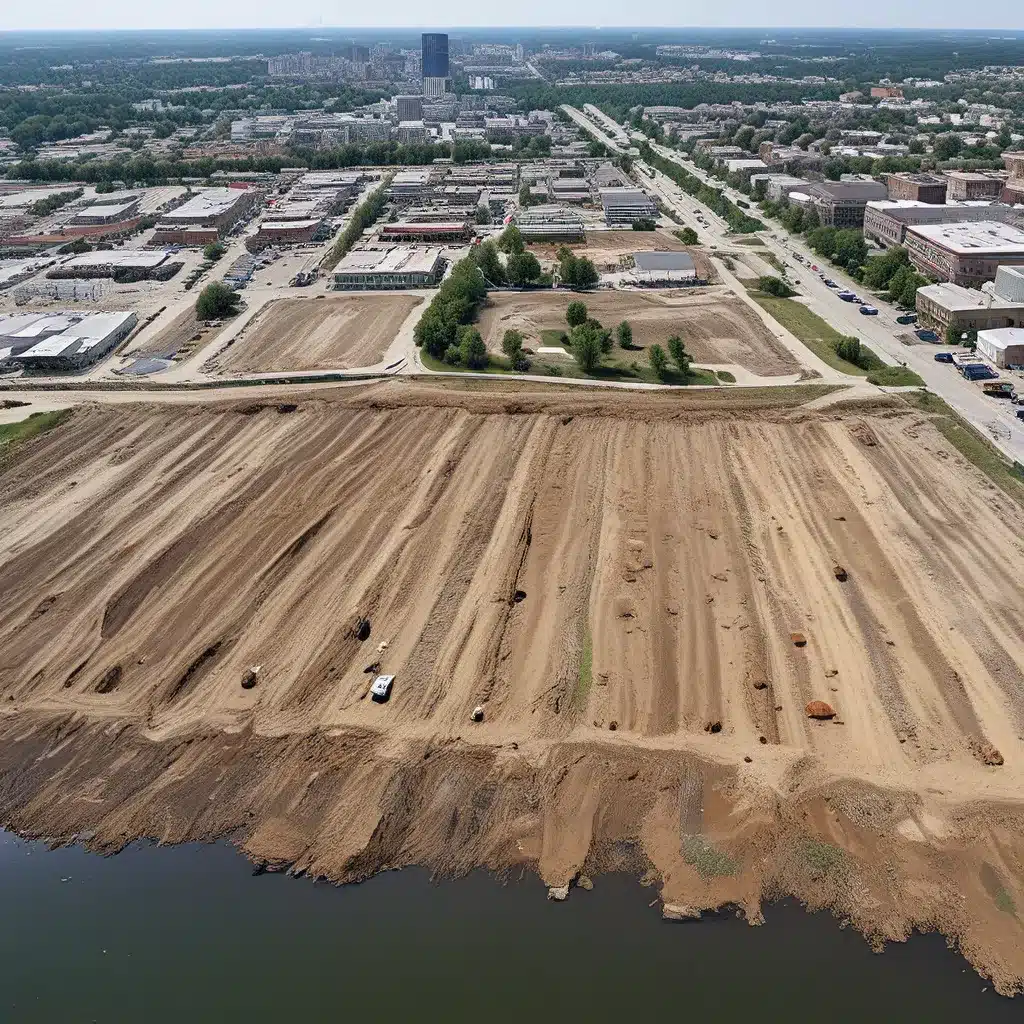
Imagine standing on a plot of land steeped in history, its soil and groundwater tainted by the remnants of industry and human activity. It’s a daunting sight, but also one filled with potential. This is the challenge facing communities across the country – how to reclaim contaminated land and transform it into vibrant, sustainable spaces.
As an environmental engineer, I’ve had the privilege of working on some of these complex site remediation projects. And let me tell you, it’s no easy feat. But with the right innovative techniques and a commitment to environmental stewardship, we’re turning these contaminated sites into the foundations for a brighter future.
Understanding the Scope of the Challenge
Contaminated land is a legacy that haunts many of our communities. From the petrochemical spills that seep into the earth to the leftover traces of military operations, these lands are scarred by substances that pose risks to both the environment and human health. It’s a challenge that requires a deep understanding of each site’s unique history, geology, and contamination sources.
Take New York, for example. The state’s rich industrial past has left its mark on the landscape, with countless contaminated sites waiting to be reclaimed. But unraveling the complexities of these sites is no small task. It takes meticulous site assessments, comprehensive risk evaluations, and a keen eye for identifying the most effective remediation strategies.
Innovative Remediation Techniques
As an environmental engineer, I’m always on the lookout for the latest advancements in site remediation technology. And let me tell you, the field is truly innovative. From in-situ bioremediation to advanced oxidation processes, we’re employing a wide range of cutting-edge techniques to tackle even the most stubborn contaminants.
One of the most fascinating methods I’ve encountered is phytoremediation – the use of plants to absorb, contain, or eliminate pollutants from the soil. This natural, eco-friendly approach not only cleanses the land but also prepares it for safer, more sustainable uses. Imagine a once-barren site transformed into a lush, vibrant oasis, its soil purified by the very plants that call it home.
But the innovation doesn’t stop there. We’re also leveraging green infrastructure, renewable energy solutions, and sustainable design principles to not only remediate these sites but also pave the way for a more sustainable future. By integrating these elements into our redevelopment plans, we’re creating spaces that not only enhance environmental quality but also foster economic opportunities and improve the quality of life for surrounding communities.
Navigating the Regulatory Landscape
Reclaiming contaminated land is no easy feat, and it’s not just the technical challenges we have to overcome. The regulatory landscape surrounding site remediation is a complex web of local, state, and federal regulations, each with its own set of requirements and nuances.
But our team of environmental professionals is well-versed in navigating this regulatory maze. By staying abreast of the latest policies and regulations, we ensure that our remediation projects not only address the contamination but also comply with all applicable laws. It’s a delicate balancing act, but one that’s essential to the long-term success of these projects.
Fostering Community Engagement and Stakeholder Collaboration
As environmental engineers, we understand that site remediation isn’t just about the technical aspects – it’s also about engaging with the community and building trust with local stakeholders. After all, these contaminated sites are often located in the heart of our communities, and the impact of our work can be far-reaching.
That’s why we prioritize open and transparent communication with local residents, businesses, and regulatory agencies. We listen to their concerns, address their questions, and keep them informed every step of the way. By fostering this collaborative approach, we’re not only able to ensure the success of our remediation projects, but also build a stronger, more resilient community.
Towards a Sustainable Future
As I reflect on the work we’ve done to reclaim contaminated land, I can’t help but feel a sense of optimism. Yes, the challenges are significant, but the potential for transformation is equally remarkable. By embracing innovative remediation techniques, navigating the regulatory landscape, and fostering community engagement, we’re not just cleaning up the past – we’re building a brighter, more sustainable future.
And that future is one that I’m proud to be a part of. Because at the end of the day, this isn’t just about restoring a plot of land – it’s about restoring hope, opportunity, and a healthier environment for generations to come. So let’s roll up our sleeves and get to work, shall we? The future of our communities depends on it.
If you’re interested in learning more about our work in site remediation and redevelopment, I encourage you to visit Inland Waters, Inc. – a leading environmental services provider dedicated to reclaiming contaminated land and transforming it into sustainable, vibrant spaces. Together, we can create a cleaner, greener future for all.


